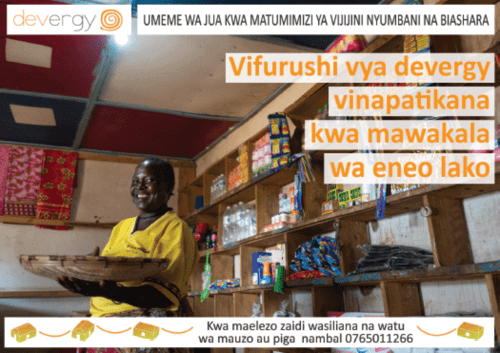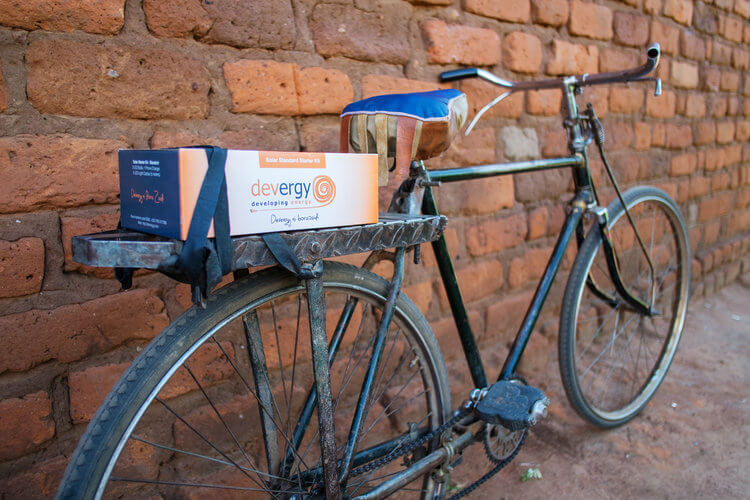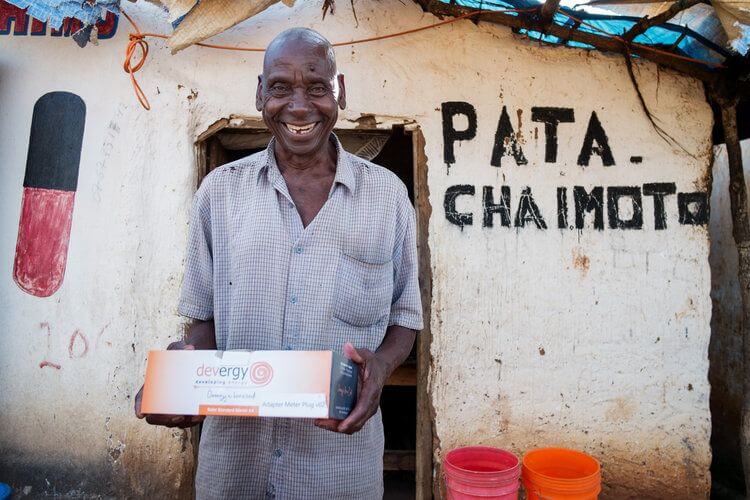This week, Power for All partner Devergy shared an honest, tell-all look at the difficulties they faced when raising awareness of their solar micro-grid technology in rural communities, and the hard work they put in to creating solutions. Read their first-hand account of the challenges they countered attracting new customers, and how they have turned challenges into opportunity.
-------
Getting the word out
Any service-oriented industry will face the challenge of how to attract new customers, and rural energy services is certainly no different. We started 2016 incredibly strong, ready to hook up thousands of new customers. Though everything technically was in place, we stumbled at what we honestly didn’t think was going to be the hard part – attracting new customers. We’ve been doing this for awhile now, our name is known throughout different rural regions of Tanzania. Our service is far superior to what our customers are currently using (kerosene, poor quality batteries) and requires no customer maintenance. Generally speaking, our customers are already familiar with the idea of solar energy and all of the benefits. It’s not a hard sell.
Except sometimes it is. It turns out we needed to apply the same innovative and creative spirit to our marketing plan that we do to the technology – so we made a few changes, surprising even ourselves with what we bought to the table.

1. We are marketing to our customers in rural Tanzania with smart, well-designed, engaging, easy-to-understand print material in their language. We are not trying to explain step-by-step how our system works on a poster (tried that – failed completely, lesson learnt). We want our print material to attract the customers interest, offer something they want, and give them an immediate way to find out more. Sounds simple, right? It took us a few months to get here.
2. We began offering more financial rewards to our salespeople for securing new customers and particularly for selling bigger-ticket appliances, and did see some positive results. However, this hasn’t completely solved one of our biggest challenges: trying to find truly effective incentives to motivate our sales team to keep going. We learnt that money is not all, and good incentives need to come both financial and non-financial. This will be something we continue to work on in 2017, now more optimistic that we’re on the right track.
3. Two words: Road Show. What’s a road show? It’s when we load up a truck with plenty of appliances, Devergy starter kits, and Devergy salespeople. We travel through villages with music and loudspeakers and make our road shows a promotional event and point-of-sale service. It allows us a lot of direct contact with our future customers where they come to us (so to speak) instead of going around house-to-house, which saves a tremendous amount of time. Not to mention, it’s FUN, and it works very well.
4. Facebook marketing. This is something we just started working on at the beginning of the year, after being inspired by another company in Kenya who had a tremendous amount of success marketing their products to rural farmers. So now we finally have a reason to use our facebook page – to directly communicate with our customers, and to buy ads targeting our specific audience (this is a relatively new feature in terms of rural audiences). This means hiring a Facebook Marketing expert, and making the investment to see if we really can find new customers and communicate with our current customer better through this service.
5. The last one is fairly big news, and perhaps surprising to anyone that is very familiar with our work. We install and maintain village-size micro-grids. That’s our heart and soul. When we arrive at a new village to sell our service, most of our customers are already relatively familiar with what solar power is. However, they’re not familiar with micro-grids and all that comes with it – the good (reliable service), and the “bad” (needing to put more money upfront). Asking people who live on less than $3 a day to part with what amounts to (roughly) a week of income isn’t always easy, especially if we enter their villages months before Harvest season starts (many of our customers will earn a significant amount of their yearly incomes during a few select months a year).
Enter the idea we specifically stayed away from – we began selling Solar Home Systems as a way of transitioning our clients to our grid service. Here’s why: while we can set up a grid and start providing power pretty quickly once we have enough interested clients (within a week), it does require more financial commitment from a larger group of households per village. For the enthusiastic household that is anxious to move to solar power, the idea of needing to wait can be a buzzkill. Contrast that to a Solar Home System, which can be sold to individual households and start working rather immediately.
Our SHS are a transition tool to the grid, hence they do not compete with our grid sales – and it’s working remarkably well. Our customers are getting a bit more immediate satisfaction and seeing the cost and lifestyle improvements (cleaner, less dangerous) immediately. Neighbors talk. Word spreads. Our SHS comes in only one size, just enough to offer lighting and phone charging – so when a SHS household and their neighbors are ready to start using radios, TVs, hair clippers, etc., it is a much easier upsell to move our microgrids into the village – along with the shiny, new, energy-efficient appliances that will work with the power from the grid.
Years ago, we said we had no interest in being on Facebook. We actively stayed away from the idea of Solar Home Systems. Our thoughts about our company branding were more about what our industry would see, not our customers. All of this has changed, and it’s changed for the better.
*Reprinted with permission

